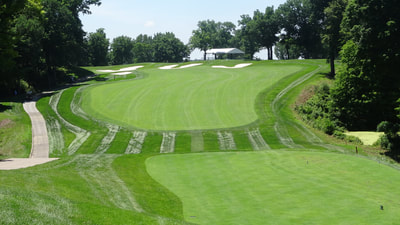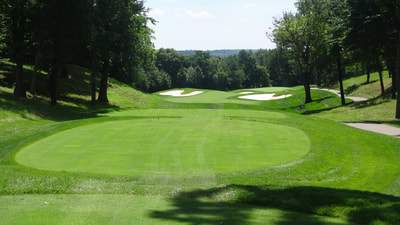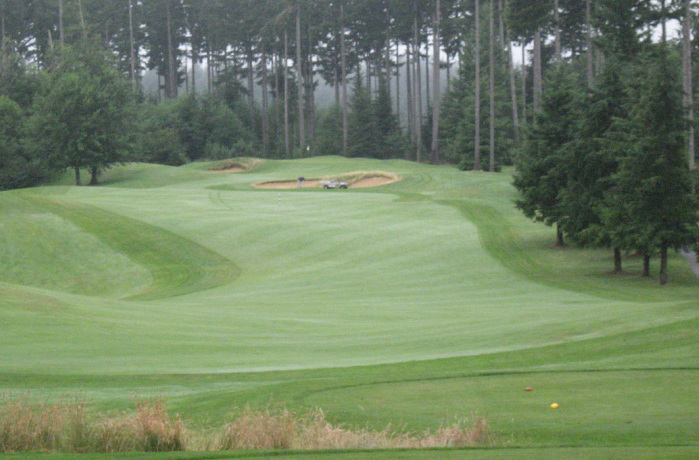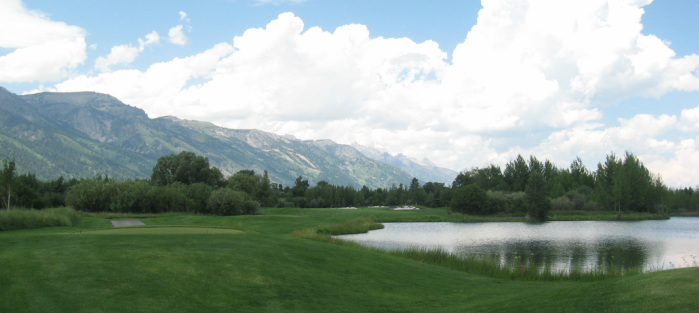I knew I'd eventually have to make a trip like this. The Quest is my project to play every course that has ever been on Golf Magazine's "Top 100 You Can Play" list. If the list was static, it would be much easier to plan and stay close to the goal. But the list changes every two years. In 2014, Wilderness Club on the Canadian border in Montana was added. In 2016, Gamble Sands in remote Washington state was added. Courses like these are not exactly "on the way" to someone who lives in the Midwest. It seems I always have a few orphans to pick up.
With this year's trip, I attempted to knock off all the western "orphans". I almost did it. Unfortunately, Shadow Creek in Las Vegas is closed for the month of July. I had intended to play it the day before Cascata, just south of Las Vegas. So it remains an orphan to be picked up in the future.
This year's trip began in Silvis, IL, turned northeast into Wisconsin for six rounds in three days, included stops in North Dakota and Montana before my first lifetime round in Canada. I then headed south to Washington state, California for three rounds and a visit with long-time friends and then to Nevada before turning northeast into Utah and Nebraska before heading back to Fort Wayne.
I experienced the extremes of weather with upper 90's heat and humidity early on in the Upper Midwest followed by chilling rain in Montana and Canada, more heat in Washington, coolness on California's Monterrey peninsula, dry 100+ temps in Nevada and Utah before normal summer heat in Nebraska.
All in all, a great trip executed according to plan. One of the resorts I experienced has taken its place as my personal favorite. See my write-up on Gamble Sands below.
In the paragraphs that follow, I'll attempt to describe some of the highlights of the trip.
TPC at Deere Run

With the 2018 John Deere Classic scheduled to begin the week of July 9th, there was a bevy of activity on and around the course. Crews were not only engaged in course maintenance but also the setup of spectator stands, air-conditioned boxes, TV towers, and concession areas.
Being a TPC course, there were many elevated grassy areas around the tees, fairways, and greens for spectator viewing.
Each tee station contains a little history of John Deere and the land on which the course was built. John Deere moved from Vermont to Illinois and settled 70 miles upstream from the site of the course. He soon learned farmers were having problems with the cast iron plows they had brought from New England where the soil was light and sandy. The plows got bogged down in the rich Midwestern soil forcing farmers to stop every few feet to scrape the thick soil from the plows. Deere became convinced that the sticky soil would fall off a highly polished and properly shaped plow. So he fashioned a plow in 1837 using the steel from a broken saw blade, providing the solution farmers needed to efficiently farm in the Midwest.
The TPC at Deere Run course is ranked 96th on Golf Magazine's "Top 100 You Can Play" list and is certainly a beautiful, well-maintained golf course. My most vivid memory of the course is the lush, long, emerald green Kentucky blue grass rough (not that I ever had to hit out of it) that was being lovingly attended to in anticipation of the 200 or so professional golfers that would be occupying the course in less than two weeks. The course is not a killer and certainly long rough would be one one of the course's major defenses against low scoring. It didn't work so well...Michael Kim shot a tournament record 27 under par and won by eight shots.
I had a good experience at this course and for the most part, it was easy to decipher from each tee what was in store. I am not a fan of uphill holes and the one hole I did not like was number three, an uphill par three with a crown running through the middle of the green. From the tee, it was impossible to see what was required of the golfer.




 RSS Feed
RSS Feed